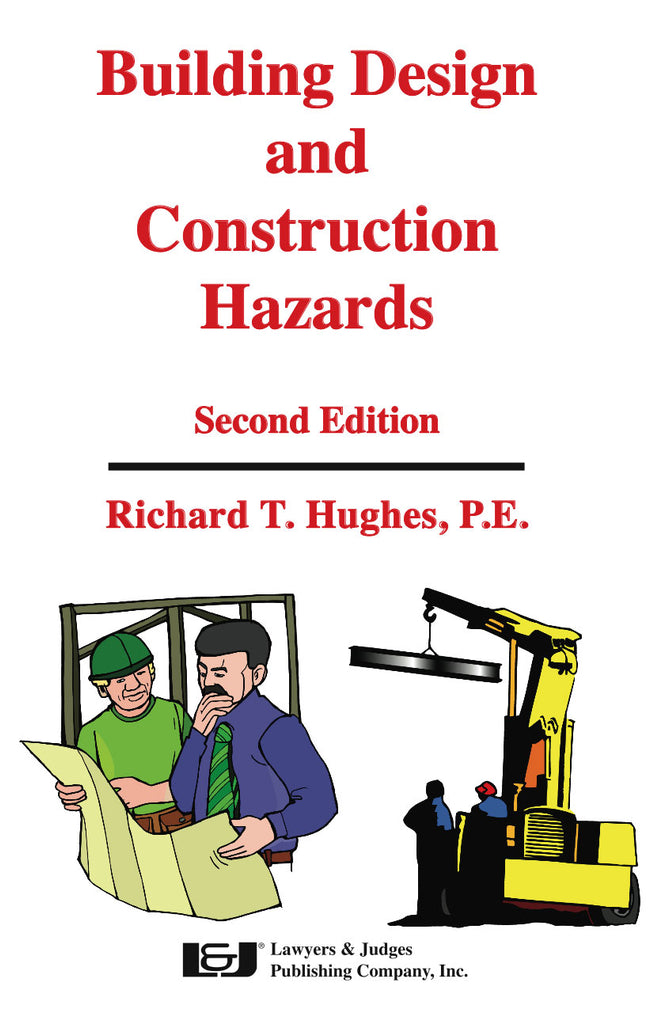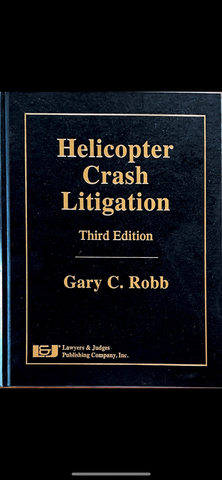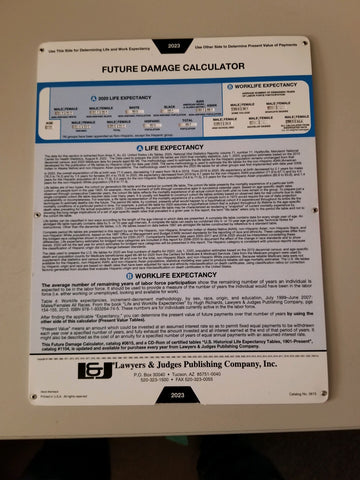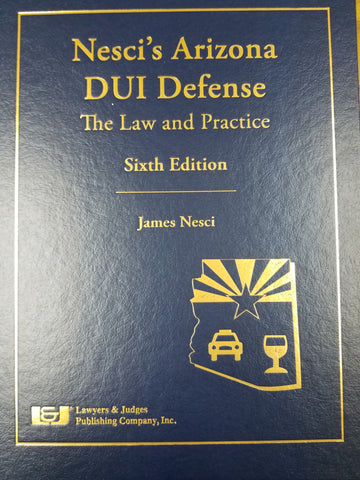
Building Design and Construction Hazards, Second Edition
- Author: Richard T. Hughes, P.E.
- ISBN-13: 978-1-936360-73-4
- ISBN-10: 1-936360-73-X
- Copyright Date Ed: December 4, 2017
- Pages: 576
- Binding Information: Softcover
- Size: 6 × 9 inches (US)
The role of the engineer either as a designer or construction manager generally provides the best opportunity to identify the hazards that cause injury or damage.
Part of this task includes ensuring for design features and modifications that will minimize hazardous conditions during construction and life of the structure. Identifying the hazards that most commonly endanger the users during the life cycle of the building facility is the primary objective of this book. This objective is accomplished by instructing the engineer how to sidestep these hazards at the time of design and construction. This book delves into the cause of many hazards common to construction, including fire, maintenance, mold, structural failure, and operational conditions and details ways to minimize or avoid these conditions, reducing the possibility of injury and damage.
Comprehensively organized from the “ground up”, this book covers all phases of any major building project. Part One addresses the concepts of hazard, liability, and ways system safety engineering works to overcome human error. Part Two covers possible hazards encountered in both interior and exterior construction plans and offers ways to eliminate them before any construction begins. Part Three covers safe construction techniques to minimize unavoidable hazards, while Part Four extends into the post-construction life of the building and outlines optimal safe practices for the user/occupant.
Table of Contents
Acknowledgements
Foreword
Preface to the Second Edition
Preface to the First Edition
Part I: Ground Rules
Chapter 1: Nature of Hazards Theory of Hazard Prevention
1.1 Introduction
1.2 Hazard Definition
1.3 Types of Hazards
A. Natural Environment
B. Mechanical
C. Electrical
D. Chemical
E. Radiant Energy
F. Biological
G. Artificial Intelligence
1.4 Management Dysfunctions that Accommodate Hazards
1.5 Hazards and the Law
Endnotes
Chapter 2: System Safety Engineering
2.1 Introduction
2.2 Illustration of a Systems Approach
A. Evolution of System Safety
B. Feasibility of System Safety
2.3 Environmental Concerns
2.4 Mathematical Analyses of System Safety
2.5 Reliability and Fault Tree Sequence
2.6 System Safety Standards
2.7 The Future of Safety
Endnotes
Additional Reading
Chapter 3: Premise Liability
3.1 Introduction
3.2 Code References
Chapter 4: Regulatory Agencies
4.1 Introduction
4.2 Engineer Responsibilities
4.3 Code References
Chapter 5: Human Characteristics
5.1 Introduction
5.2 Technical Data on People
A. Depth Perception
B. Hearing Perception
C. The Human Response Process
D. Memory
E. Visual Reception
F. Visual Acuity
G. Peripheral Vision
H. Pedestrian Characteristics
I. What Constitutes a Handicapped Person
J. Code References and Industry Standards
K. Iconic Memory
5.4 Noise
A. What Are the Chances of Injury or Death?
B. Noise Levels
C. How Noise Injuries Can Be Prevented
D. Engineering Controls
E. Administrative Controls
F. History
G. Code References and Industry Standards
5.5 Dust
A. A Human Tragedy
B. What Are the Chances of Injury or Death?
C. Why Dust Hazards Continue to Occur
D. How Dust Hazards Can Be Prevented
E. History
F. Code References and Industry Standards
Endnotes
Part II: Design Basics
Section A: Interior
Chapter 6: Means of Egress
6.1 Introduction
A. Case in Point
B. Code References and Industry Standards
6.2 Slips, Trips, and Stumbles on Floor Surfaces
A. Introduction
B. Case in Point
C. Foot Physiology
D. Code References and Industry Standards
6.3 Trips, Falls, and Stumbles
A. Introduction
B. Case in Point
C. Code References and Industry Standards
Endnotes
Chapter 7: Stairs, Steps, Ledges, and Staircases
7.1 Introduction
A. Dimensional Uniformity
7.2 Single Steps
7.3 Case in Point
7.3 Code References and Industry Standards
Chapter 8: Fences, Guards, Banisters, Balconies, and Handrails
8.1 Introduction
8.2 Case in Point
8.3 Code References and Industry Standards
Chapter 9: Ramps
9.1 Introduction
9.2 Case in Point
9.3 Code References and Industry Standards
Chapter 10: Doors, Windows, and Glass
10.1 Introduction
10.2 Allowable Glazing Materials
A. Laminated Glass
B. Wired Glass
C. Annealed Glass
D. Heat-Strengthened Glass
E. Tempered Glass
10.3 Case in Point
10.4 Code References and Industry Standards
Chapter 11: Chairs and Furniture
11.1 Chairs and Furniture
A. Introduction
B. Case in Point
C. Code References and Industry Standards
11.2 Bathrooms, Showers, and Vanities
A. Introduction
B. Case in Point
C. Code References and Industry Standards
Chapter 12: Ceiling Heights, Signs, Protruding Objects, and Head Clearance Awnings
12.1 Introduction
12.2 Case in Point
12.3 Code References and Industry Standards
Chapter 13: Electricity, Appliances, Kerosene Heaters, Heating Elements, and Circuits
13.1 Introduction
A. Cases in Point
1. A fatality
2. A shocking experience
B. What Are the Chances of Injury or Death?
C. Why Electrocutions Still Occur
D. How Secondary Power Hazards Can Be Prevented
E. History
F. Code References and Industry Standards
13.2 Electric-Arc Welding
A. Typical Occurrences
B. What Are the Chances of Injury or Death?
C. Why Arc-Welding Is Dangerous
D. Case in Point
E. Regulations
F. Code References and Industry Standards
Chapter 14: Lighting and Emergency Lighting
14.1 Introduction
14.2 Case in Point
14.3 Code References and Industry Standards
Chapter 15: Sight Distance, Size, Contrast, Color, and Light
15.1 Introduction
15.2 Examples
15.3 Code References and Industry Standards
Chapter 16: Elevators, Automatic Doors, Revolving Doors, Escalators, and Conveyors
16.1 Introduction
16.2 Conveyors
A. Typical Occurrences
B. What Are the Chances of Injury or Damage?
C. Why Do We Have So Many Injuries, Product Losses, and Down Time from Conveyors?
D. How Can Injury and Damage Be Prevented?
1. Guidelines for users
2. Guidelines for Designers
E. History
F. Code References and Industry Standards
G. Representative Litigation
16.3 Examples
A. Code References and Industry Standards
Chapter 17: Falling Objects
17.1 Introduction
17.2 Cases in Point
17.3 Chance of Injury or Death
A. Introduction
B. Why it Keeps Occurring
C. Injury Prevention
1. Safeguards
2. Preventive measures
3. Protective equipment
17.4 History
17.5 Code References and Industry Standards
17.6 Patents
17.7 Representative Litigation
Chapter 18: Gases
18.1 Carbon Monoxide
18.2 Carbon Monoxide Poisoning
18.3 What Are the Chances of Injury or Death?
18.4 Carbon Monoxide Poisoning Continues to Occur
18.5 How Carbon Monoxide Can Be Controlled?
18.6 History
18.7 Code References and Industry Standards
18.8 Representative Litigation
Chapter 19: Mold
19.1 Introduction
19.2 Code References
19.3 Mold Regulation
Chapter 20: Fires, Fire Safety, Explosions, and Smoke Detectors
20.1 Introduction
20.2 Fire Prevention
A. Fire Investigation
1. Types of fire
2. Sources of fire
B. Case in Point
C. What Are the Chances of Injury or Death?
D. How Fires Can Be Prevented
20.3 Fire Protection System Hazards
A. Carbon Dioxide
B. Dry Chemicals
C. Halon
D. Sprinkler and Other Water Systems
20.4 History
20.5 Explosions
20.6 Code References and Industry Standards
20.7 Representative Litigation
Endnotes
Section B: Exterior
Chapter 21: Sidewalks, Cross Walks, Parking Lots, and Parking Garages
21.1 Introduction
21.2 Case in Point
21.3 Code References and Industry Standards
Chapter 22: Snow and Ice
22.1 Maintenance—Snow, Ice, Grease, Oil, and Floor Cleaning
A. Introduction
B. Case in Point
C. Code References
22.2 Ice Guards and Roof Drains, and Site Drainage
A. Introduction
B. Case in Point
C. Code References
Chapter 23: Stadiums, Grandstands, and Bleachers
23.1 Introduction
23.2 Case in Point
23.3 Code References and Industry Standards
Chapter 24: Street Grates, Open Grid Floors, and Joints in Walking Surfaces
24.1 Introduction
24.2 Case in Point
24.3 Code References and Industry Standards
Chapter 25: Playgrounds and Swimming Pools
25.1 Playgrounds
25.2 Swimming Pools
25.3 Case in Point
25.4 Code References and Industry Standards
Part III: Construction
Chapter 26: Construction in Occupied Buildings
26.1 Construction Management
A. Cases in Point
B. What Are the Chances of Injury or Death When a CM Fails to Address Safety?
C. Why Is Poor Contract Management Becoming a Significant Factor in Workplace Injury?
D. How Can Contract Operations Be Made Safe?
E. History
F. Code References and Industry Standards
G. Representative Litigation
26.2 Unsafe Equipment Control Systems
A. Dangerous Occurrences
B. What Are the Chances of Injury or Death?
C. Why Unsafe Control Systems Exist
D. How Injury Can Be Prevented
E. History
F. Code References and Industry Standards
G. Representative Litigation
H. Back to the Future
Chapter 27: Mobile Equipment
27.1 Large Truck Hazards
A. Case in Point
B. Dangerous Situations
C. What Are the Chances of Injury or Death?
D. Why Are So Many Crashes Occurring?
E. How Can Heavy Truck and Car Crashes Be Prevented?
1. Truck safety
2. Traffic control for road construction and maintenance
F. History
1. The development of highway truck traffic
G. Observations
1. Political undoings
H. Code references and Industry Standards
27.2 Forklift
A. Cases in Point
B. What Are the Chances of Injury or Death?
C. Why Injury or Death Occurs
D. How it Can Be Prevented
1. Design safe forklifts
2. Additional safeguards for stand up forklifts
3. Safe warehouse design
4. Provide warnings
E. Code References and Industry Standards
F. Patents
G. Representative Litigation
H. Observations
27.3 Blind Zones on Moving Equipment
A. Cases in Point
B. What Are the Chances of Injury or Death?
C. Why Are People Caught in Blind Zones?
D. How Blind Zones Can Be Prevented
E. Other Hazard Prevention Measures
F. Code Regulations and Industry Standards
G. Patents
Endnotes
Chapter 28: Construction Methods
28.1 Wood Frame Construction
A. Why Construction of Wood Frame Buildings Results in High Injury Rates
B. How Can Wood Frame Construction Injuries Be Prevented?
C. Code References and Industry Standards
D. Case in Point
E. Product Safety
F. Alternatives to Regulation
28.2 Concrete Formwork
A. Discussion
B. Case in Point
C. What Are the Chances of Injury and Death
D. Why Falls from Elevations Occur on Concrete Formwork
E. How Falls Can Be Prevented
F. Code References and Industry Standards
G. Representative Litigation
28.3 Steel Erection
A. Type Occurrences
B. What Are Chances of Injury or Death?
C. Why Injuries Continue to Occur
D. How Injuries Can Be Prevented
E. History
F. Code References and Industry Standards
G. Cases in Point
H. Legislation
28.4 Masonry Failure Hazards
A. Typical Occurrences of Human Tragedy
B. What Are the Chances of Injury or Death?
C. Why Masonry Injuries and Failures Occur
D. How Masonry Injuries Can Be Prevented
E. History
F. Code References and Industry Standards
G. Representative Litigation
H. Building Cladding
Chapter 29: Ladders, Scaffoldings, and Platforms
29.1 Introduction
29.2 Ladders
A. Typical Occurrences
B. What Are the Chances of Injury and Death from Ladders?
C. Why Injuries Continue to Occur
D. How Can Ladder Injuries Be Prevented?
1. Fixed ladders
2. Portable ladders
3. Testing
4. Job-made ladders
E. History
F. Code References and Industry Standards
G. Representative Litigation
29.3 Scaffolding
29.4 Access and Work Platforms
29.5 Fall Prevention vs. Fall Protection
A. Tragic Situations
B. What Are the Chances of Injury or Death?
C. Where Fatal Falls Most Often Occur
D. Why Fatal Falls Keep Occurring
E. How to Be Protected from Falls from an Elevation
F. History
G. Code References and Industry Standards
H. Representative Litigation
I. What’s New in the Industry?
1. Devices
2. Anchorages
3. Training
J. Times Have Changed
29.6 How to Ensure Safe Access and Working Locations
A. History
B. Code References and Industry Standards
C. Representative Litigation
Endnotes
Chapter 30: Confined Spaces, Manholes, Tanks, and Attics
30.1 Introduction
30.2 Confined Spaces
A. What Is a Confined Space?
B. Typical Occurrence
C. What Are the Chances of Injury or Death?
D. History
E. Pre-Entry Check List for Confined Space Safety
F. Atmospheric Hazards
G. Code References and Industry Standards
H. Representative Literature
I. Case in Point
30.3 Trenching
A. Tragic Occurrences
B. What Are the Chances of Injury or Death?
C. Why Trench Collapse Occurs
D. Other Associated Hazards
E. How Trenching Injuries and Death Can Be Prevented
F. Trench Boxes
G. The History of Trenching Hazards
H. Code References and Industry Standards
I. Representative Litigation
30.4 Hazard Isolation
A. Procedures for Controlled Entry, Lockout/Tagout, and Permits
B. What Are the Chances of Injury or Death?
C. Why Isolation of Dangerous Energy Is Sometimes Overlooked
D. How Controlled Entry, Lockout/Tagout and Permits Can Save Lives
E. Code References and Industry Standards
Endnotes
Chapter 31: Cranes, Hoist, Blocking, and Rigging
31.1 Common Safety Issues
31.2 Crane Upsets
A. Typical Occurrences
B. What Are the Chances of Injury or Death?
C. Why Crane Upsets Keep Happening
D. How Crane Upset Can Be Prevented
E. Code References and Industry Standards
F. Patents
31.3 Equipment Powerline Contact
A. What Are the Chances of Injury or Death?
B. Why Powerline Contacts Keep Occurring
C. How Powerline Contact Can Be Prevented
1. Available safeguards
D. Code References and Industry Standards
31.4 Killer Hooks
A. Typical Occurrences of Human Tragedy
B. What Are the Chances of Injury or Death?
C. Why Hook Failures Happen
D. How Load Loss Can Be Prevented
E. Recap of Important Safety Tips
F. History
G. Code References and Industry Standards
31.5 Crane Two-Blocking Hazard
A. Human Tragedy
B. What Are the Chances of Injury or Death?
C. Why Two-Blocking Keeps Occurring
D. How Two-Blocking Can Be Prevented
E. History
F. Code References and Industry Standards
Part IV: User/Occupant
Chapter 32: Moving Parts of Machinery
32.1 Introduction
32.2 Case in Point
32.3 What Are the Chances of Injury or Death?
A. Why It Keeps Occurring
B. Mechanical Hazards
C. Hazardous Motions and Actions
32.4 How Injury Can Be Prevented
A. Requirements for Safeguards
32.5 Types of Machine Guards
A. Fixed Guard
B. Point-of-Operation Guard
C. Automatic and Interlocking Guards
D. Self-Adjusting Guards
E. Other Guarding
F. Guarding During Maintenance
32.6 History
32.7 Code References and Industry Standards
32.8 Patents
32.9 Representative Litigation
32.10 Lessons Learned
Chapter 33: Operational Manuals and User Training
About the Author
Index




